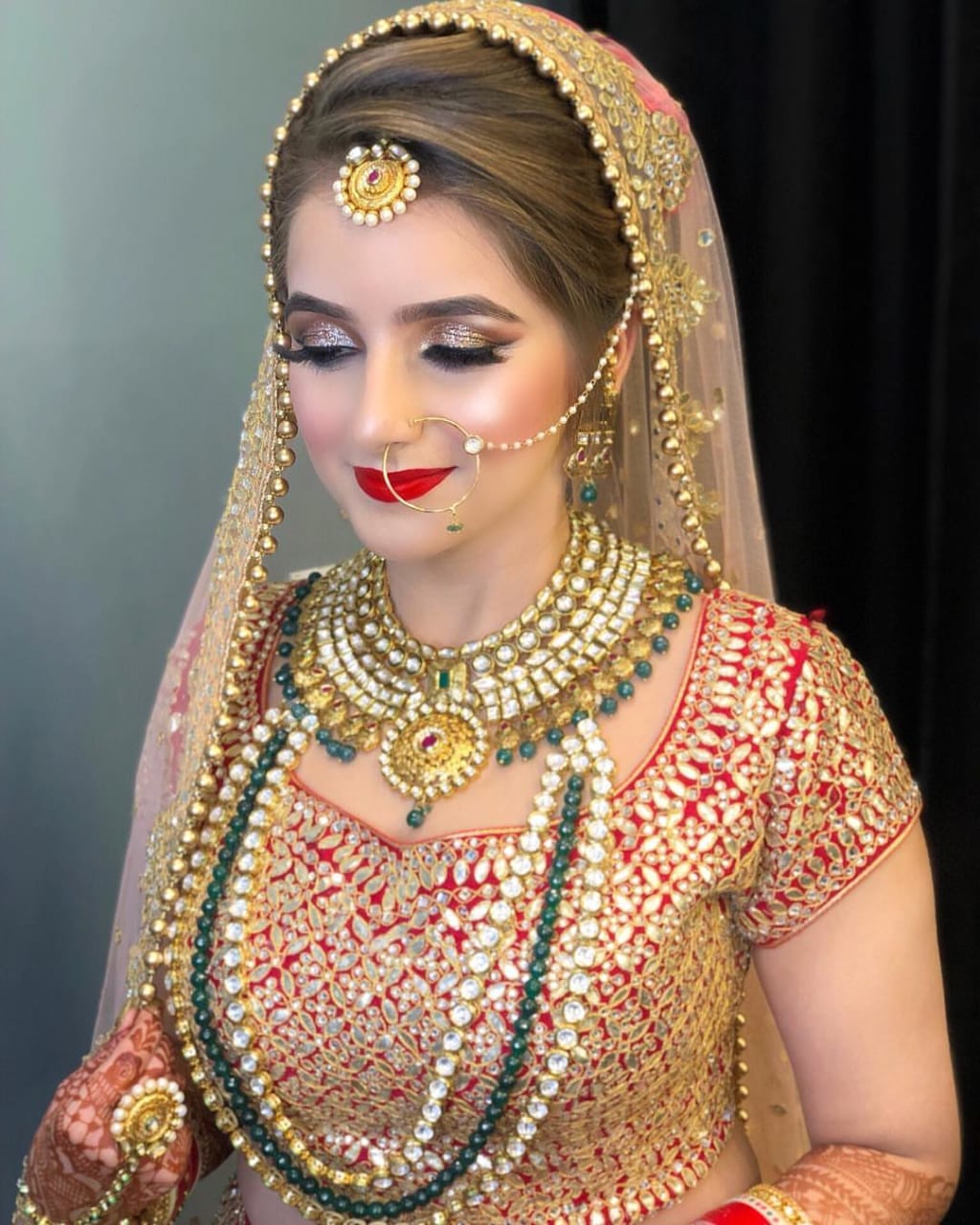JEWELRY
Jewelry is often associated with treasure—gold, gemstones, valuable materials—and is considered to be objects of intrinsic beauty, though the early beginnings were very different. In prehistoric times, long before humans worked metals, jewelry was made of non-precious materials. Burials of 30,000 b.c.e. in Europe show that at the time people used local materials available to them, such as shells and pebbles, and, in hunting societies, also animal teeth and claws, to make jewelry. Existing examples reveal that pieces were engraved with intricate geometric patterns and, later, zoomorphic images. Thus, jewelry was an early form of decorative art. The study of some primitive cultures gives evidence that organic materials, which have since disintegrated, would have also undoubtedly been utilized in the past. It was not until a later stage of human development that people chose precious and possibly scarce materials from far-away for jewelry.

Jewelry is as old as humankind. Whether coming from a primitive culture or modern civilization of the West or East, and regardless of material and style, humans of both genders and all age groups have the need for self-adornment. The significance of jewelry transcends time limits and geographic boundaries; similarities in the use of jewelry for personal adornment become apparent in the study of various cultures.
In prehistoric times, as well as in contemporary cultures, jewelry is not only ornamentation for the body, but also a means of communication. Hierarchy, prestige, and power are expressed through jewelry, which can affirm the status of an individual in society. What initially appears to be an ornament can mark allegiance to a society or individual. Men and women can impress each other through jewelry. Yet possibly the most powerful qualities attributed to jewelry are the amuletic and talismanic functions of warding off evil or giving luck. These properties go back to the origins of jewelry and continue well into the nineteenth century. Even in contemporary cultures people carry good-luck charms. Jewelry also played an important role in protecting against the dangers of life, and was given in burials for the afterlife of the deceased. In addition, jewelry was also worn as a sign of personal affection and fidelity, and marked special occasions in life, such as coming of age, association to a religion through communion or confirmation, nubility, marital status, and motherhood. Jewels in their aesthetic expression are not only signs of wealth and taste, but also reflect—and communicate—the personal character and temperament of the wearer.
Throughout its history until about the mid-twentieth century, when jewelry experienced a radical change, it had been dependent on the fashions of the day, with the exception of finger rings. Varying necklines, sleeve lengths, hemlines, and fabrics determined the type of jewelry worn, while the choice of materials and symbolism determined its function and usage. The creativity of the goldsmith is boundless, as are the types and styles of wearable objects for the body.
If not passed on as a family heirloom or given for the person's afterlife and found in excavations of burials, many types of jewels that are known to have existed have not survived. Jewelry made of precious materials, regardless of century or culture, have been destined to be dismantled, the gemstones reused and the metals such as silver and gold melted down for bullion, either to become a financial resource or to be remodelled in a new fashion. Jewels with enamel have withstood this destiny, as it was too complicated and costly to remove the enamel, whereas golden chains with a considerable weight in metal were the first to be melted down. Few images of jewelry types and how they were worn survive from antiquity. Mummy masks and wall paintings of the ancient Egyptian era, ancient Greek statues of gods and vase painting, Etruscan tomb sculpture, Roman tombstones, and the informative mummy portraits of Fayum from the Roman period all give valuable evidence. In the Middle Ages, tomb effigies and even religious paintings of the Virgin Mary and saints illustrate jewelry of the time. More importantly, the development of portrait painting and the depiction of the individual from the fifteenth century onwards (supplemented after the mid-ninetenth century by photography) enables a comprehensive study of jewelry, and makes possible the reconstruction of many types that are no longer in existence.
In prehistoric times people chose materials from their immediate environment. A statuette dating back to 20,000 b.c.e., the so-called "Venus of Willendorf," shows a fertility statue wearing a bracelet, and burials give evidence of the use of necklaces made of snails and shells—both fertility symbols and a sign of motherhood. Men wore animal teeth and claws to signify their strength over the animal kingdom and their ability to hunt and, in turn, feed and protect their families. Such objects would possibly have marked their position within the community. In its early stages, jewelry was predominantly amuletic—its function was to guard its wearers in a life of hardships.
Until recently, and even to a limited extent in the early 2000s, among traditional peoples who managed to resist the impact of Western religion and culture, it is possible to discern elements of these more traditional attitudes toward personal adornment. Tattoos, makeup, and jewelry were in many cases, in such societies, not simply matters of personal adornment, but also conveyed specific messages about social and gender roles; they were used to ward off disease and other evils, and sometimes also to work magic against opponents; and as acts and signs of prayer and devotion to divinities. A widespread, if attenuated, example of the magical power of jewelry can be found throughout the Middle East and in parts of Africa, where the wearing of blue glass beads as a means of warding off the "evil eye" is very common.
In some societies, Western-style jewelry has still not completely effaced the wearing of more traditional forms of jewelry. The use of natural materials in jewelry in ways that probably preserve a very long continuous tradition of craftsmanship can be found, for example, among the highland peoples of New Guinea, where shell, bird-of-paradise feathers, boar tusks, and other animal products are commonly employed in personal adornment. Until the second half of the twentieth century these elements of jewelry were ubiquitous in the absence of alternative materials (for example, metal objects); in the early twenty-first century their continued use represents a choice among a wide range of possibilities.
In other contemporary non-Western societies, jewelry can still be seen as fulfilling another of its ancient functions, that is, it acts as a repository of wealth while also retaining its amuletic properties. Among pastoral nomadic peoples in the steppelands of Asia, throughout the Middle East, and in North Africa, women commonly wear very heavy silver jewelry, including headdress ornaments, earrings, necklaces, bracelets, belts, and frontlets, sometimes including actual silver coins (of many eras and many countries) worked into the jewelry. These coins also had an amuletic function, because their jingling sound was believed to ward off evil. Such jewelry not only displays the status of the family to which the woman belongs, but also acts as a highly portable form of wealth that can be converted to monetary use at any time it is needed. Likewise, in cities and agricultural regions of the Middle East, India, and Southeast Asia, gold jewelry acts as a repository of wealth as well as being beautiful and prestigious. In many Indian communities, for example, the conspicuous wearing of gold jewelry by a bride is an essential element of a wedding ceremony.
About the Creator
Enjoyed the story? Support the Creator.
Subscribe for free to receive all their stories in your feed. You could also pledge your support or give them a one-off tip, letting them know you appreciate their work.





Comments
There are no comments for this story
Be the first to respond and start the conversation.